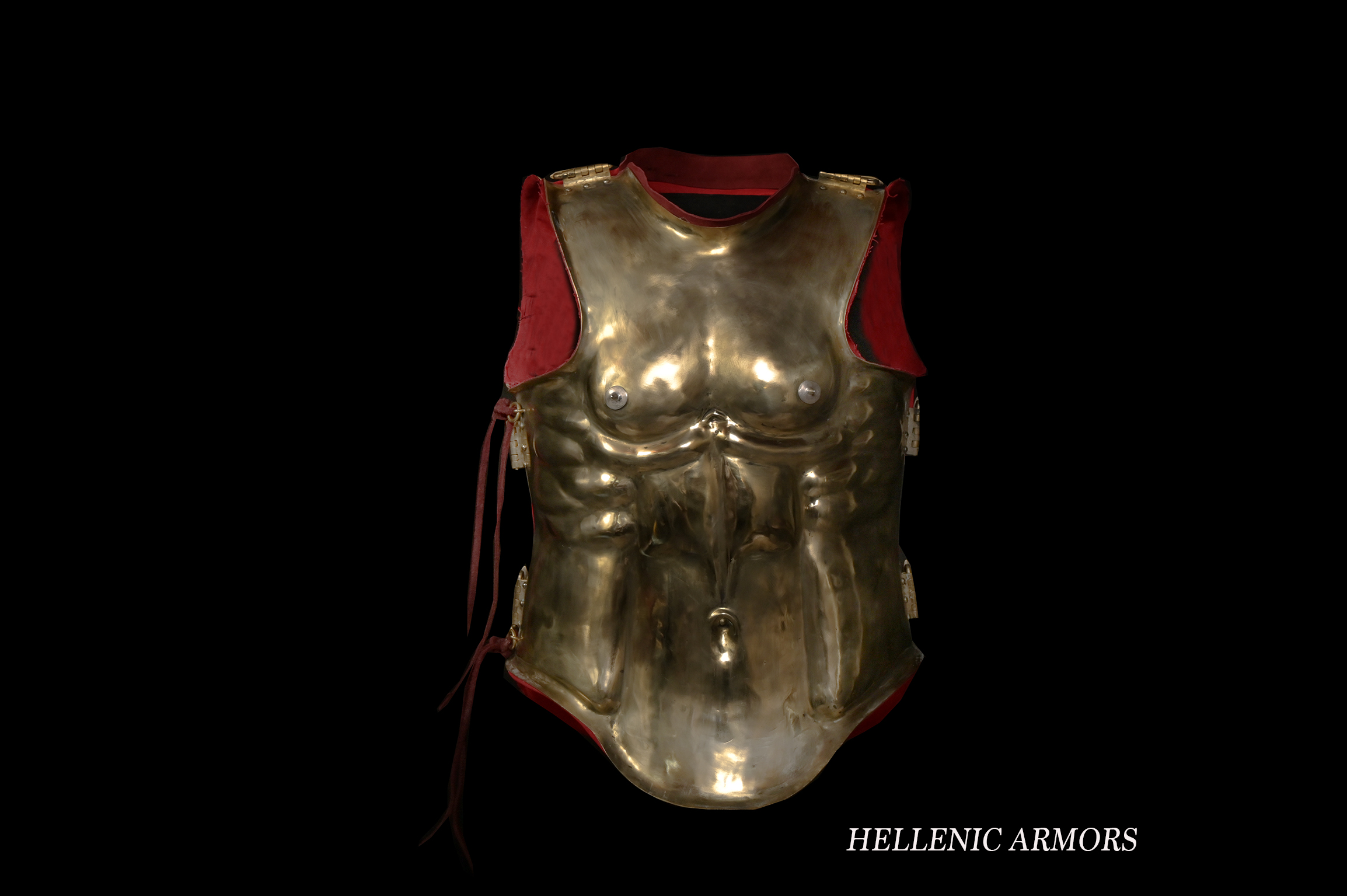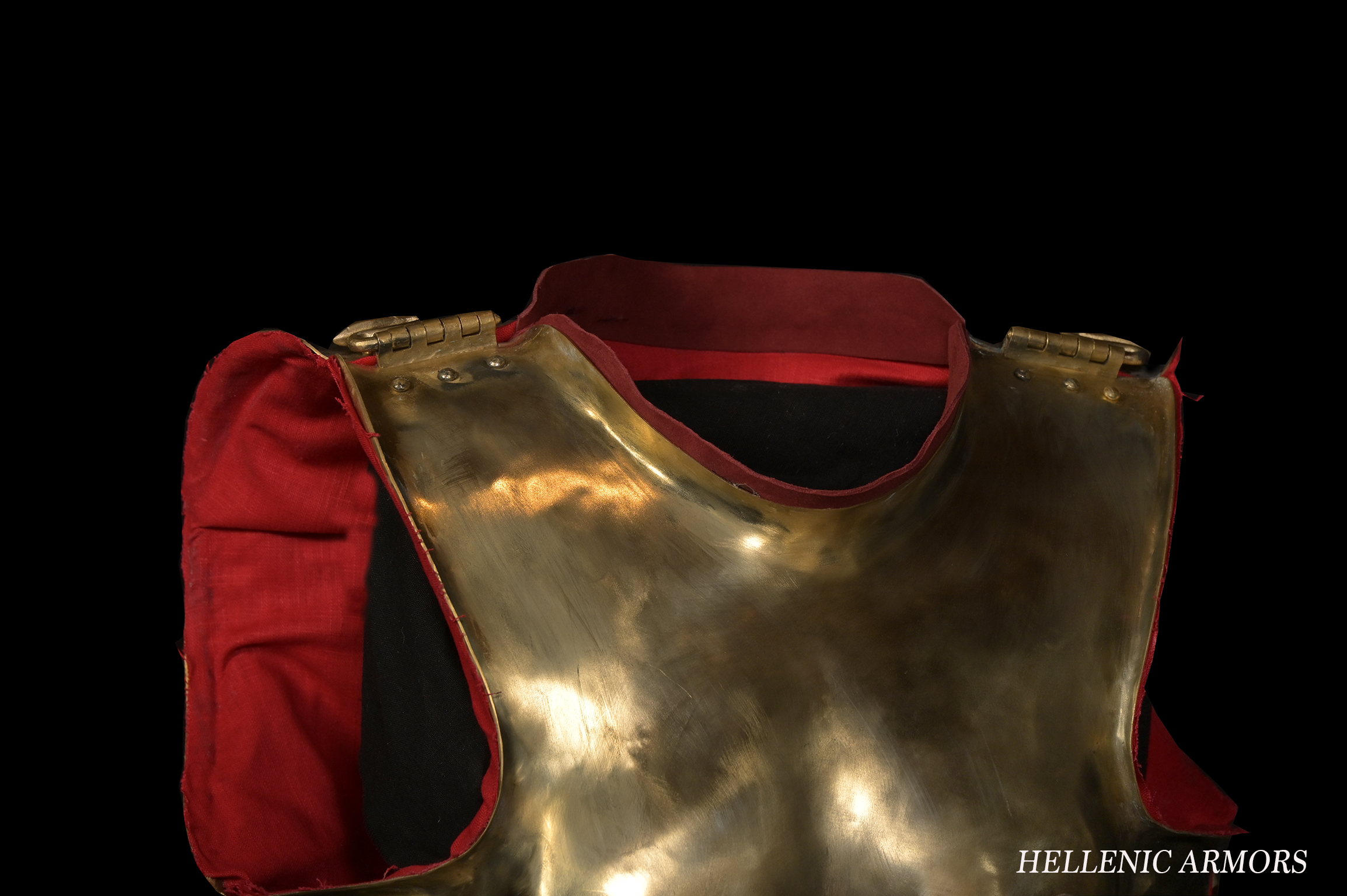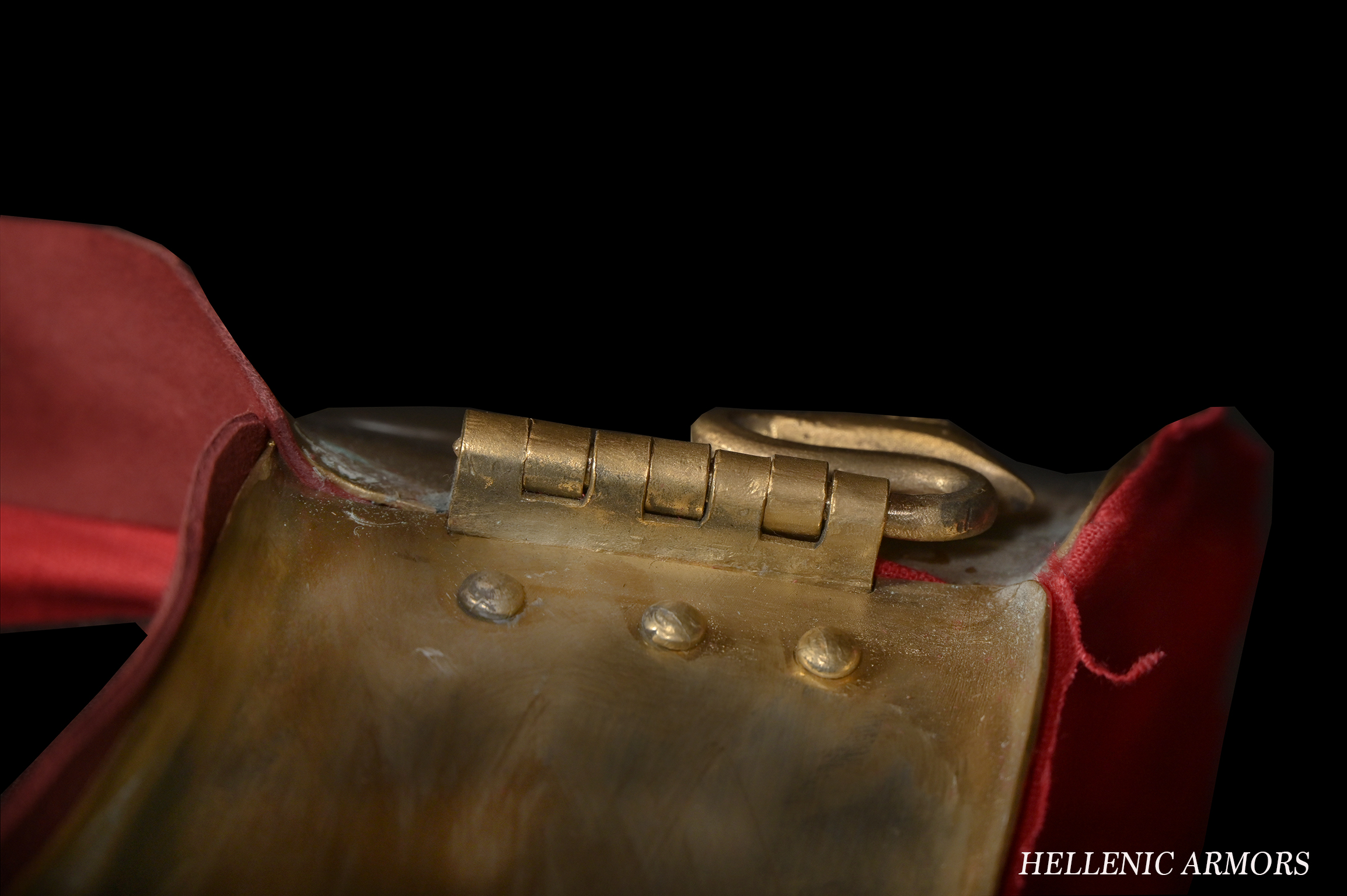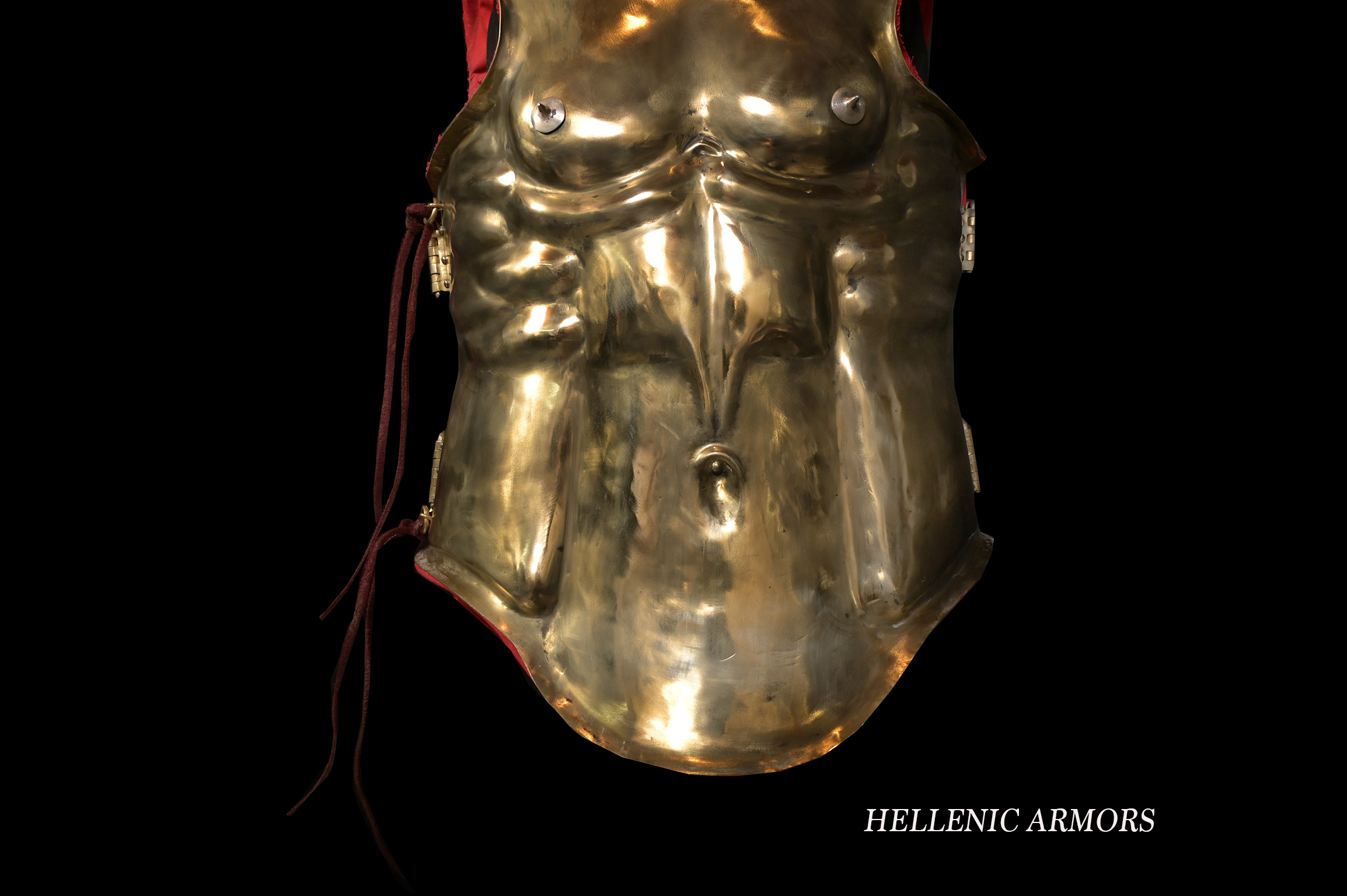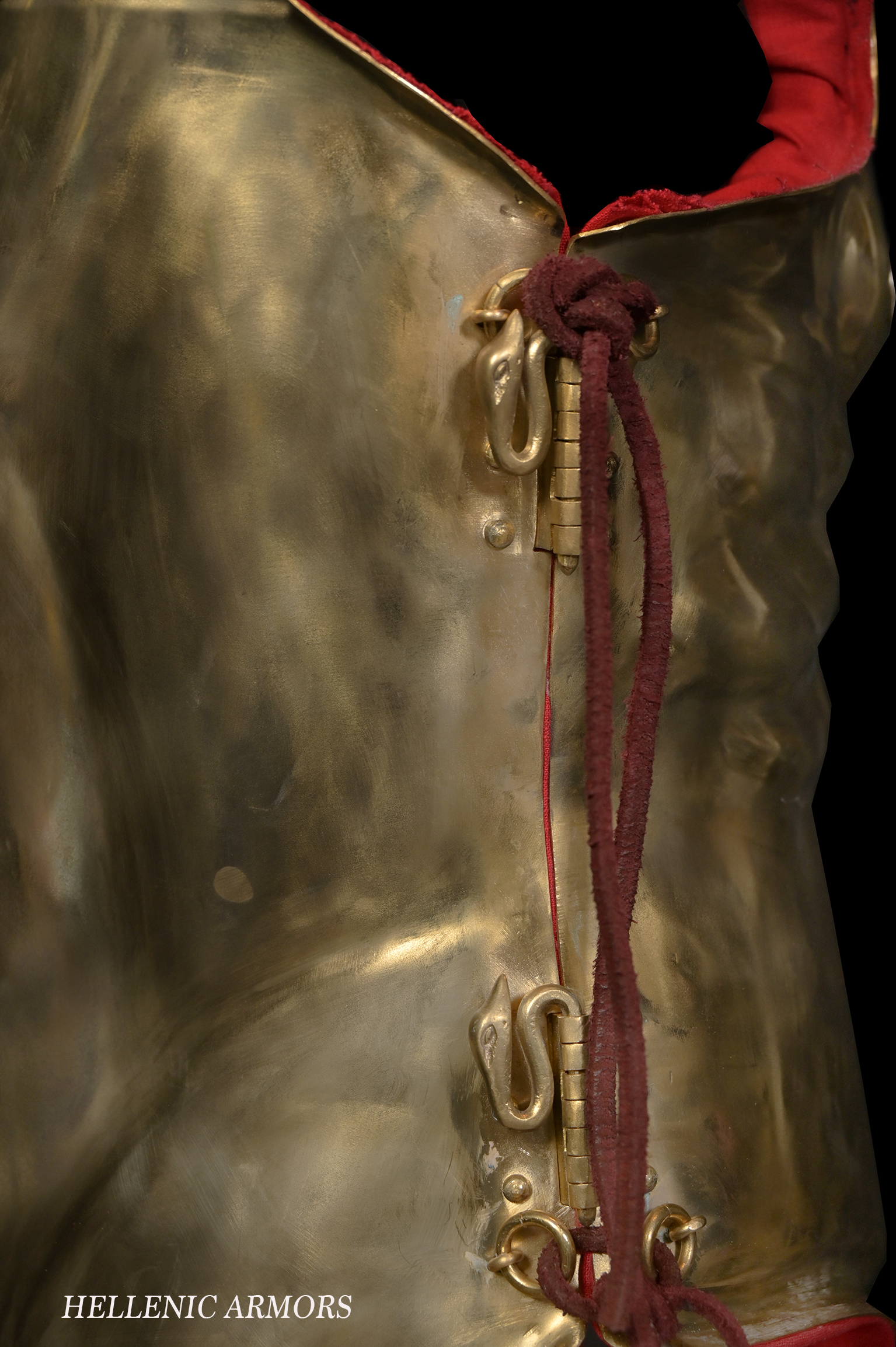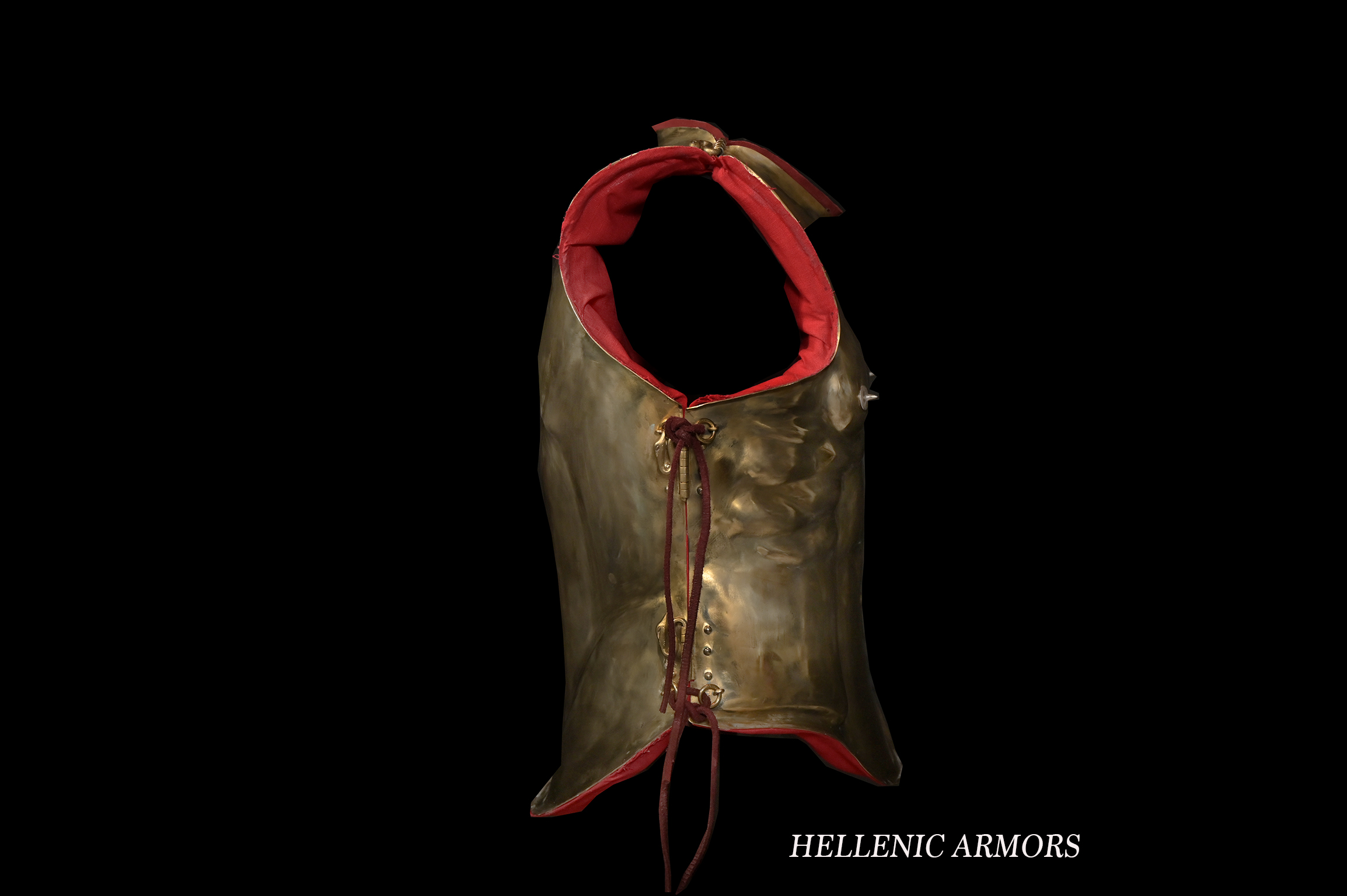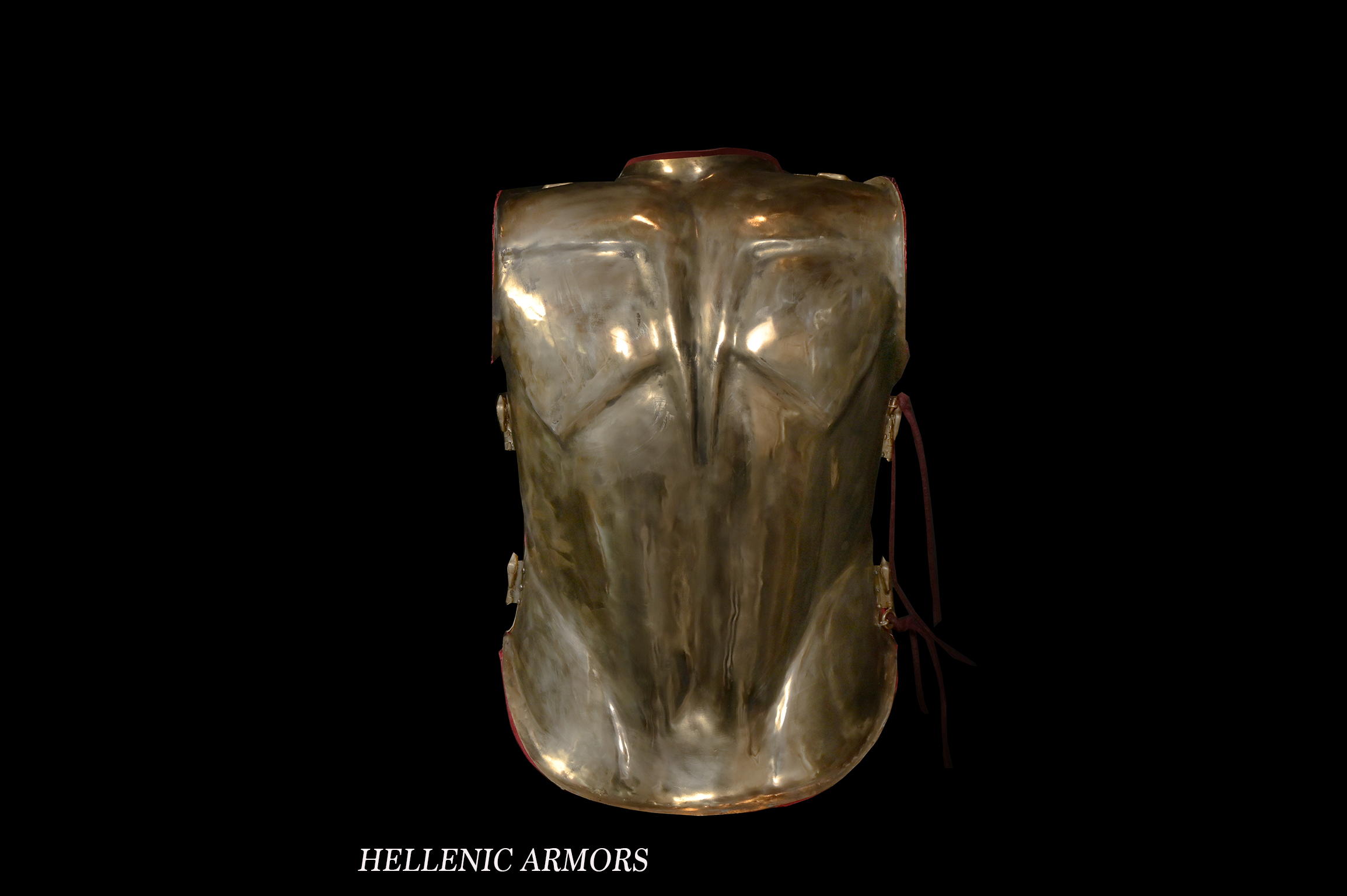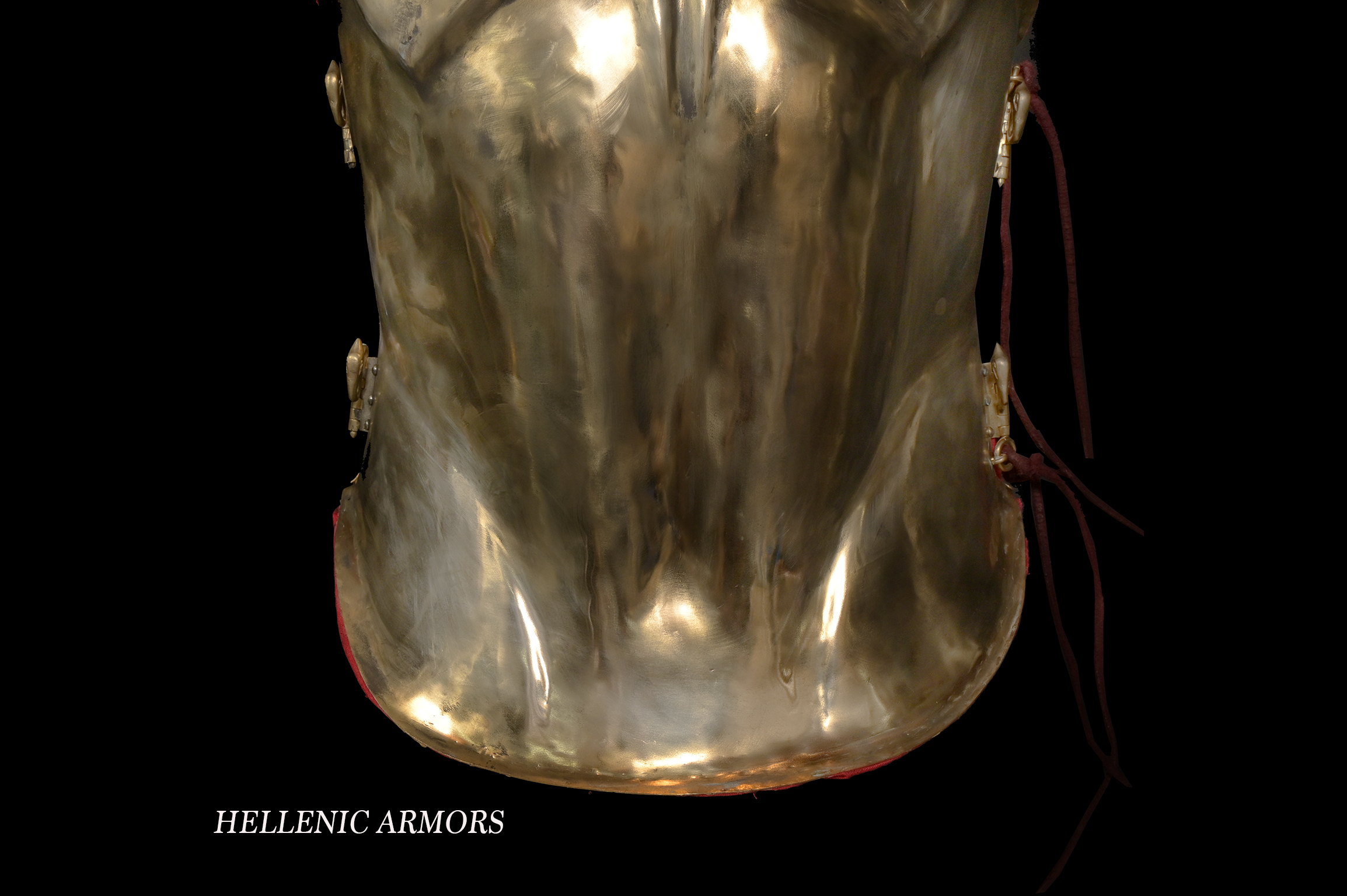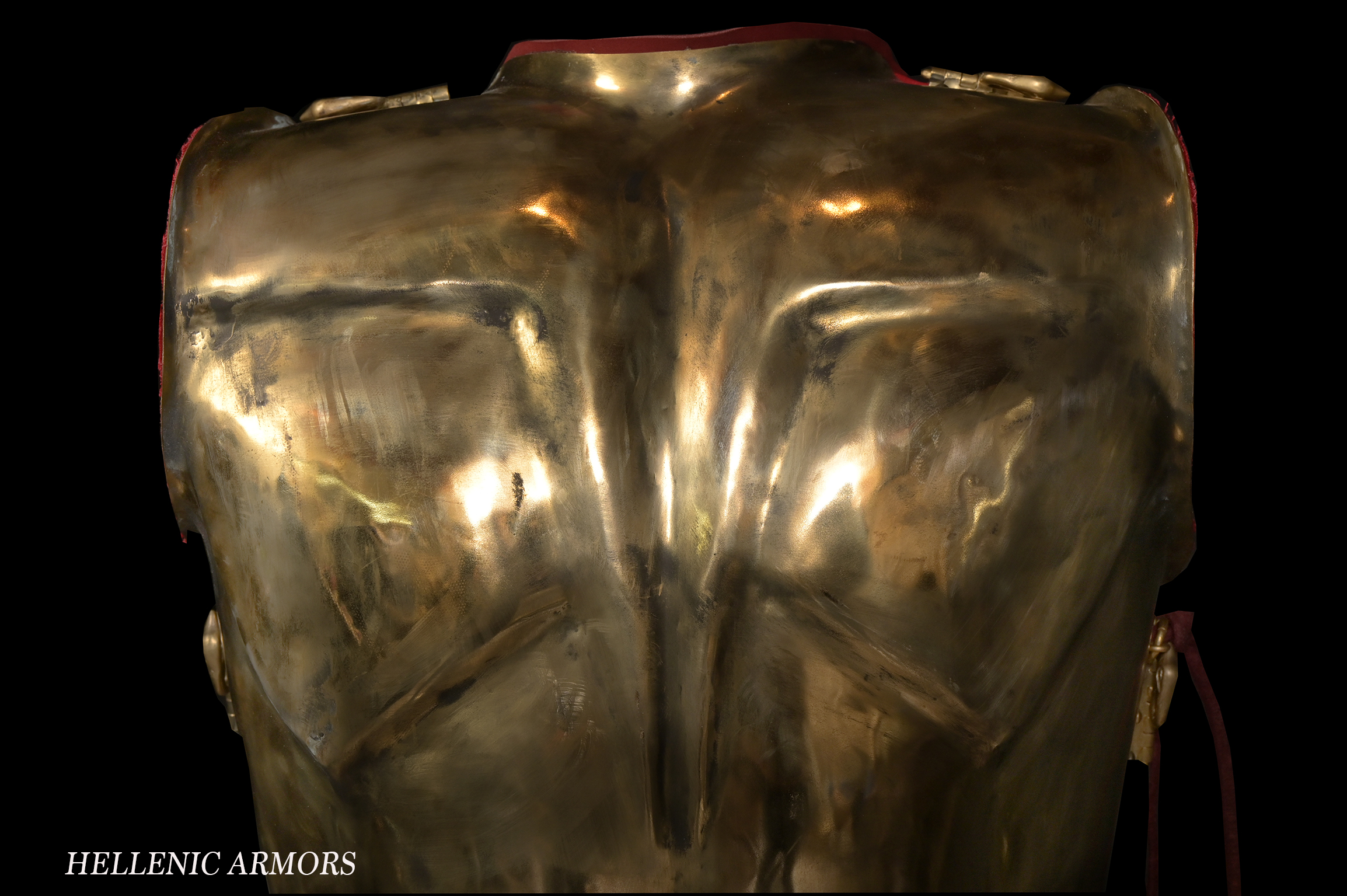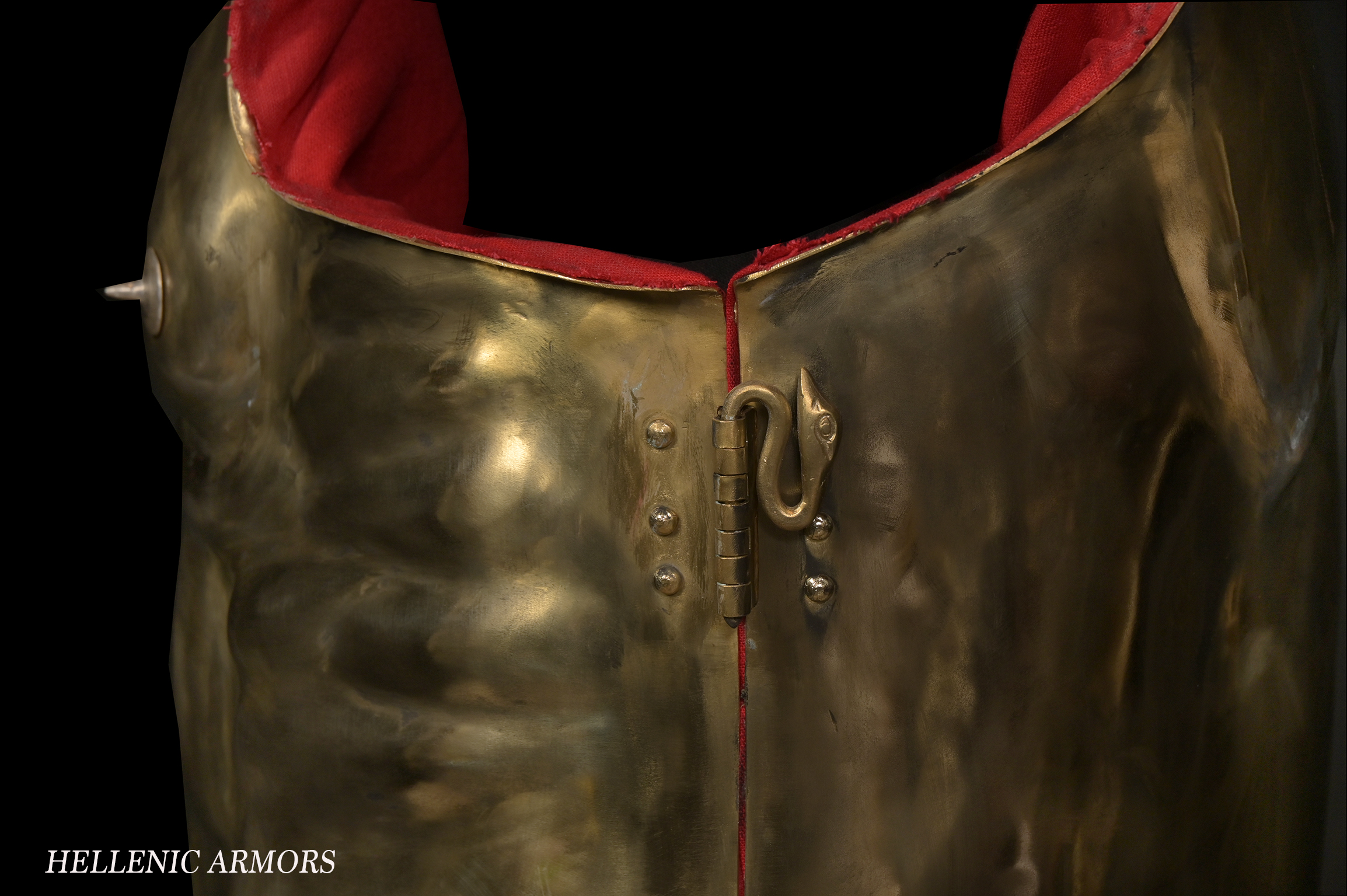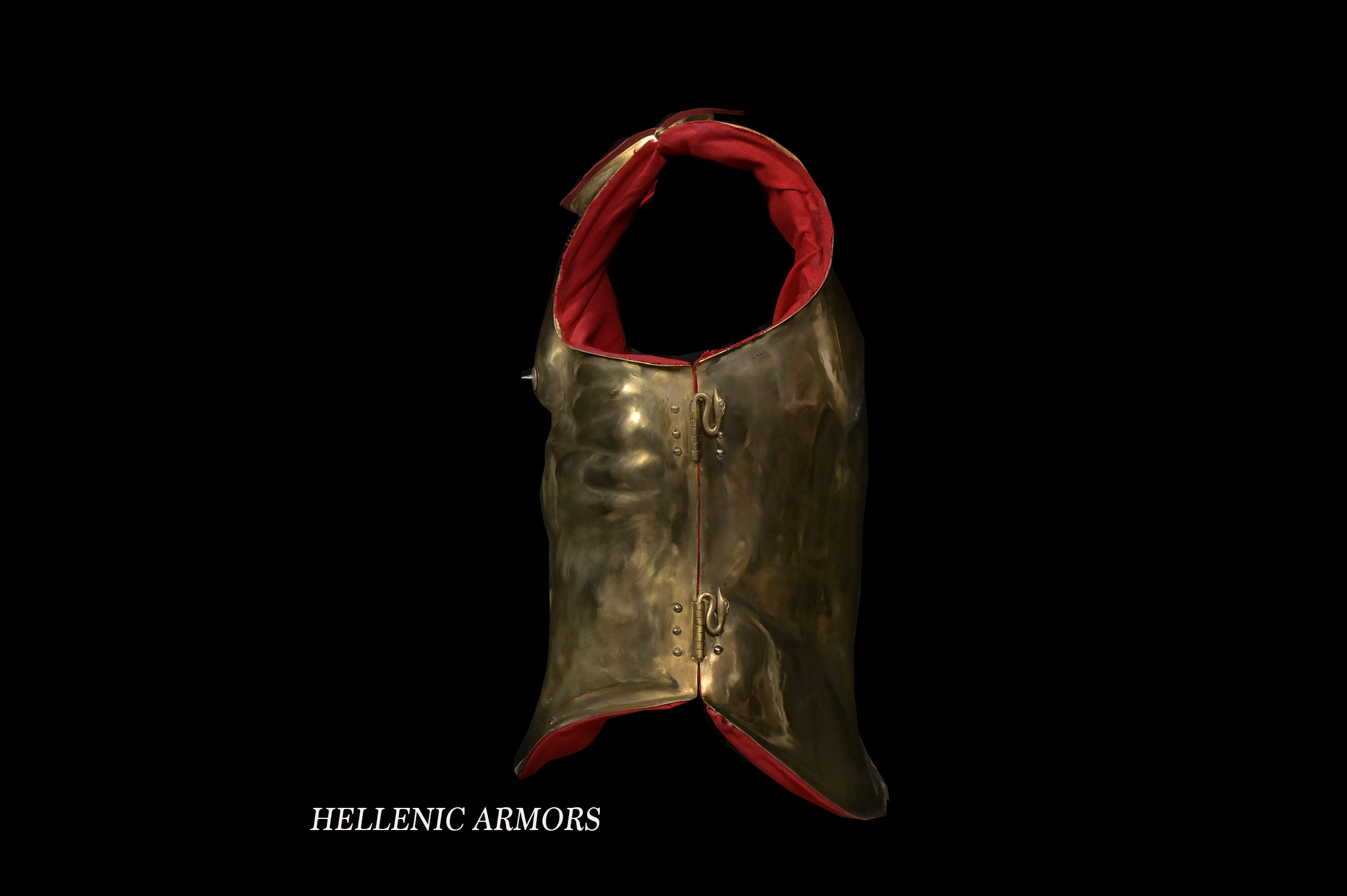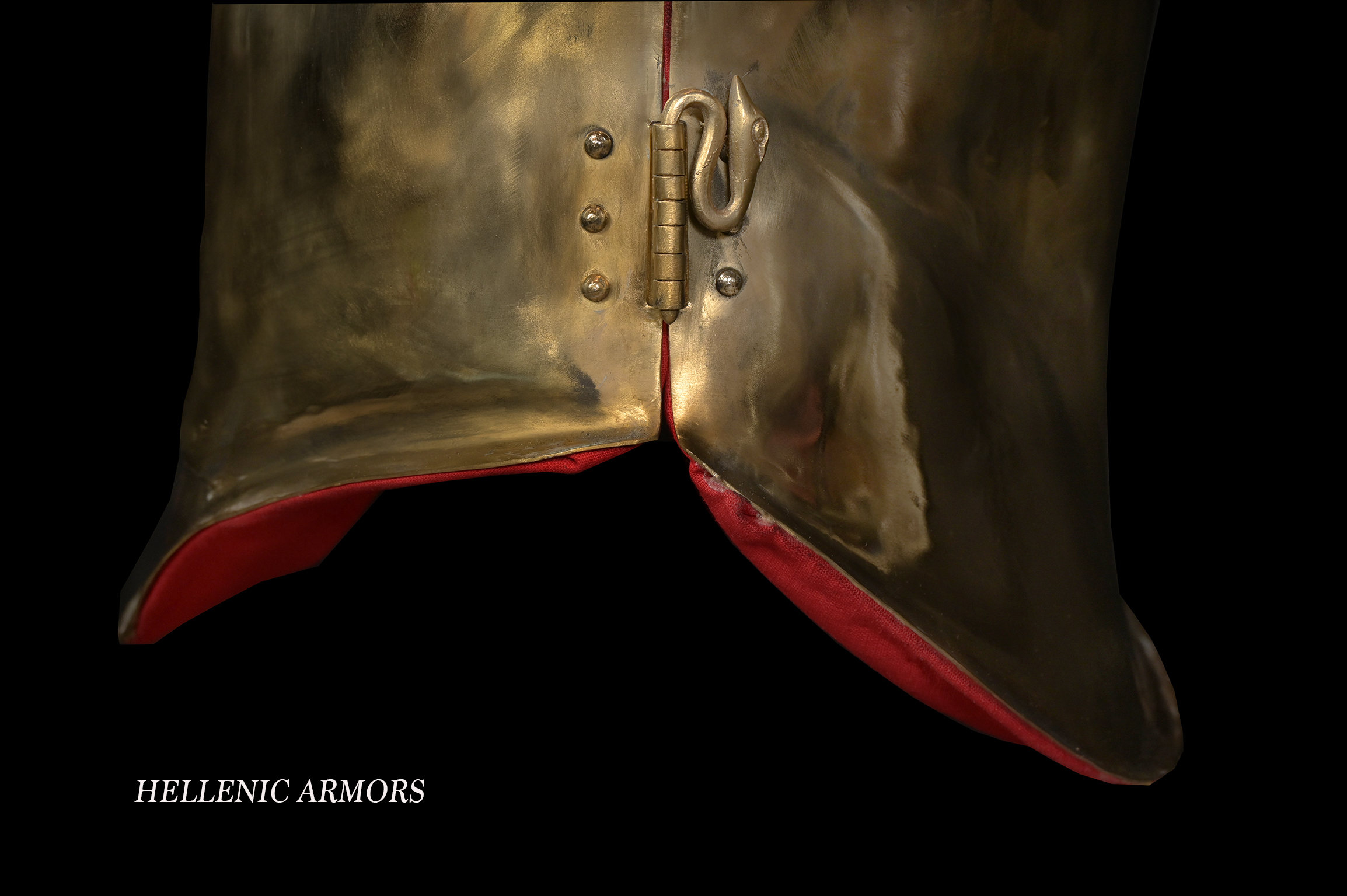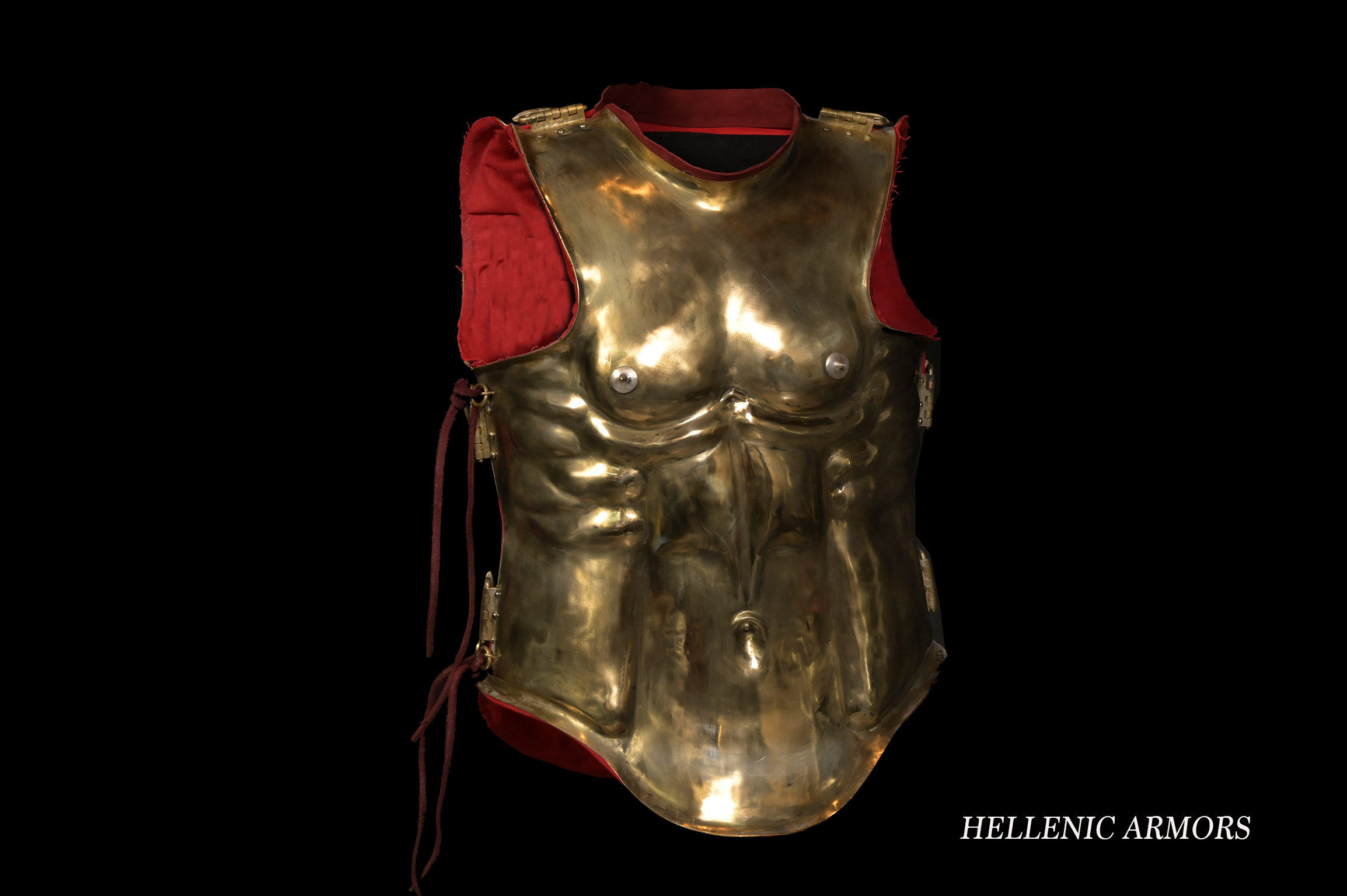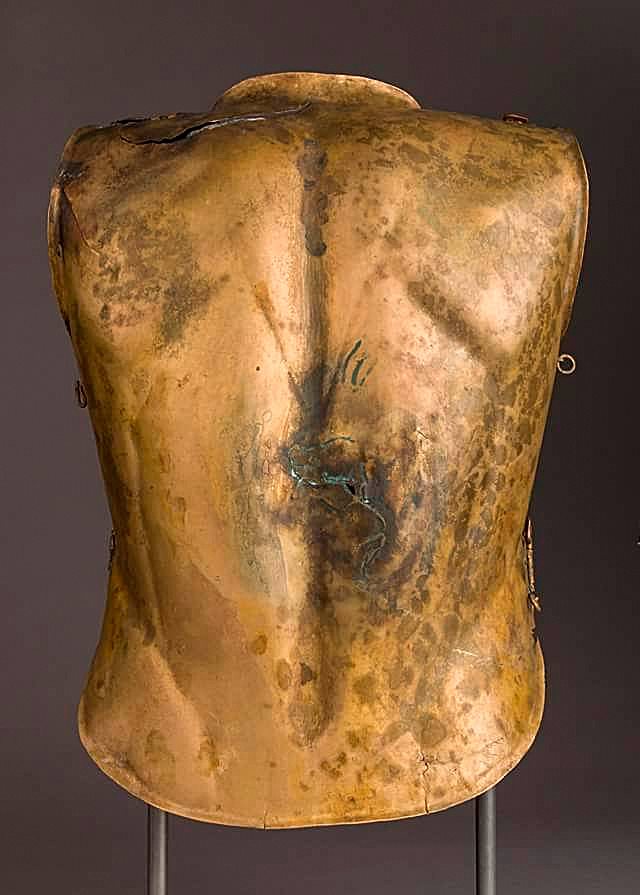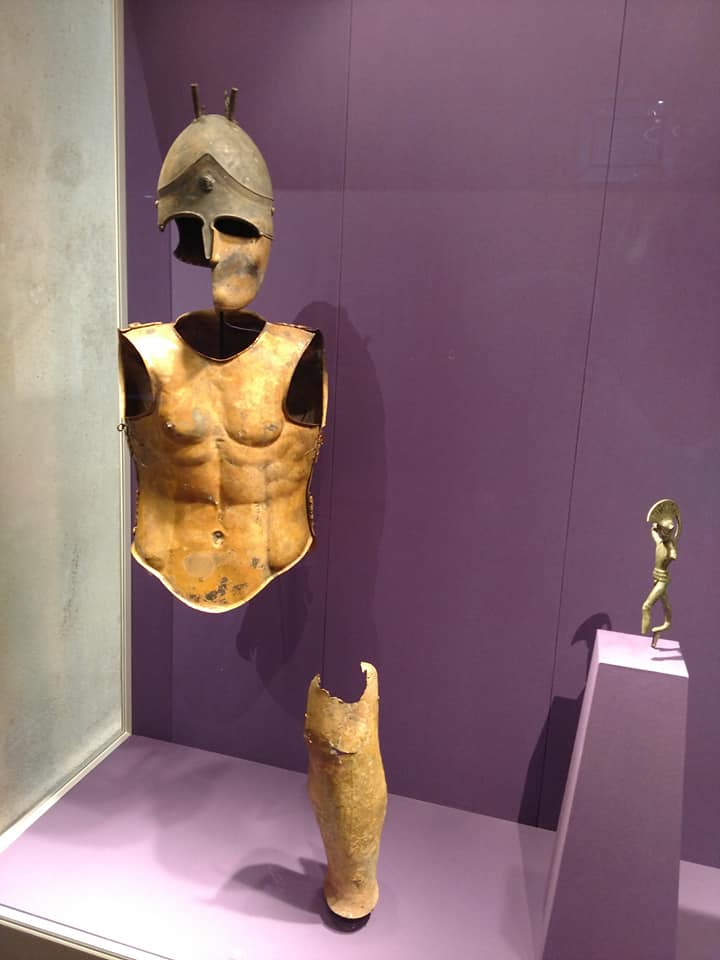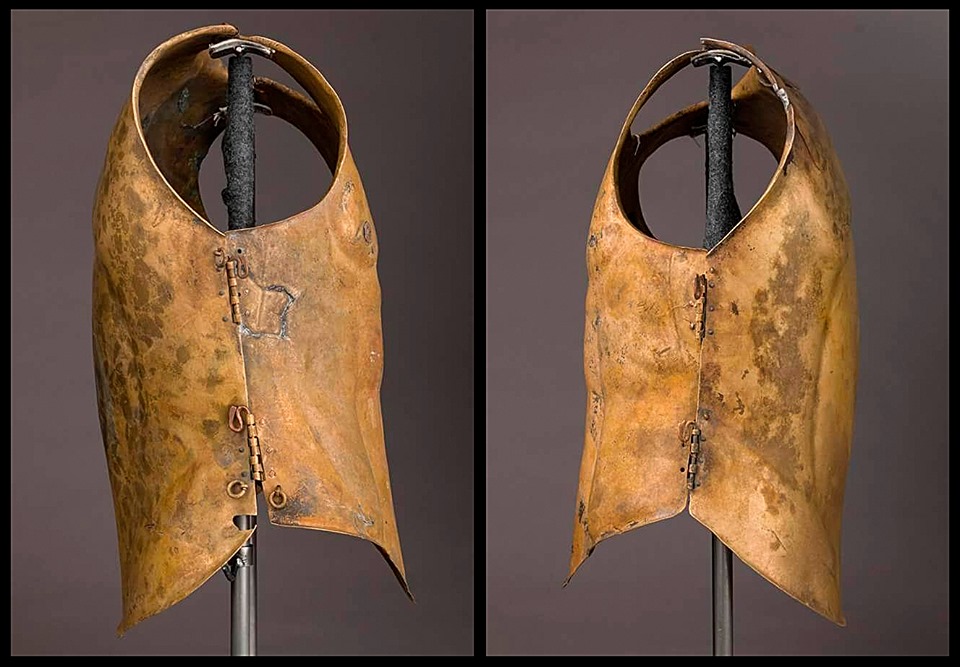Ancient Greek Armors
Εtruscan Muscle cuirass from M.E.T
Vulci, 4th century BC
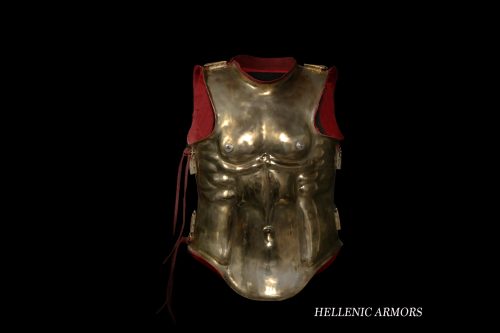
The original cuirass (accession number: 2017.228a-d) is displayed at the Metropolitan Museum of Art in New York (United States of America). It is an exquisite example of a muscular Etruscan torso from central Italy (Vulci archaeological site). The thorax is characterized by its particular anatomy and specifically by the narrowness of its thoracic surface, it has been dated to the fourth century BC.
It consists of two halves, the front and the dorsal, which are joined together by means of six pairs of hinges & pins, two on each underarm side and two on the shoulder area, left and right of the neck. The hinges are fixed in place with round-headed bronze rivets. Only the right lateral side bears two pairs of a fastening system of ring- cord arrangements. The pins of the hinges are also bronze, adorned with a gooselike head. Both, the neck and arm openings have a characteristic triangular development. The “muscularity” of the dorsal sheet is a unique feature as it follows geometric patterns with clear straight lines, abandoning the naturalistic impression of the human muscles.A really impressive artistic imprint.
The “musculature” of the chest is peculiar, an unrealistic impression of male pectoral muscles, quite narrow and highly stylized for a symbolic representation.The lower half of the abdomen is more naturalistic with obvious frontal, lateral abdominal area and a large navel. The edges of the plates are semi-wrapped outwards. The nipples are inset, made of cast silver with a pointed end.
It’s almost certain that the torso was manufactured by a Greek workshop in Southern Italy (Magna Graecia) for a wealthy Etrurian warrior.
